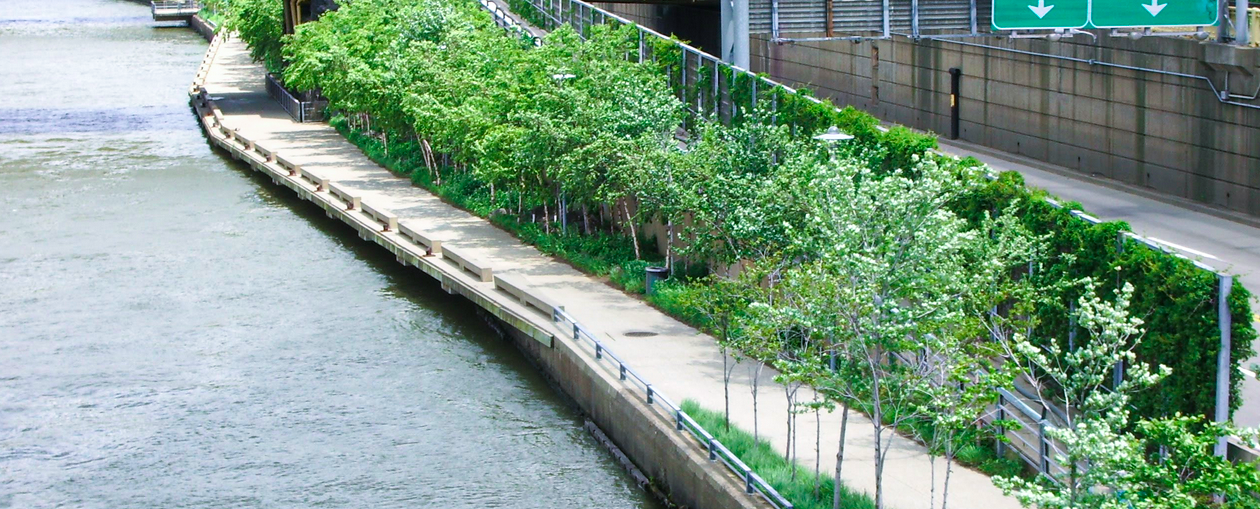
Riverlife Helps PA get $5 Million Expansion of Waterfront Development Tax Credit
by Michael Machosky
JULY 22, 2022
There has been a seismic shift in how people view Pittsburgh’s rivers. They were industrial sewers and highways for barges for so long. Most of us barely thought about them at all, except maybe as a mental aversion to crossing them (another legendary Pittsburgh attribute).
But now, it’s a different story. In many places, Pittsburgh’s riverfronts are beautiful, accessible and adapted to a vast array of uses: housing, marinas, parks, pleasant promenades, etc. And the nonprofit Riverlife has been leading this transformation for decades now — and they’ve just helped usher through a Waterfront Development Tax Credit expansion, taking the current allocation of $1.5 million up to $5 million — available for waterfront development efforts statewide.
This tax credit itself is not enough to, say, transform a polluted tract of industrial riverfront into something useful. Instead, it’s meant to catalyze private investment — which tends to find riverfront development quite attractive, but often needs a bit of a boost.
“Back in 2016, we worked with the state legislatures to establish this program,” says Matthew Galluzzo, president and CEO for Riverlife. “We know that a lot of our work is a cobbling of resources together and to be able to create, what amounts to public-private partnerships to do to tell to help fund some of that work is hugely important to our riverfronts. So it's another tool in a big toolbox or for us to deliver on our work.”
The Waterfront Development Tax Credit Program provides tax credits to businesses that make contributions to designated waterfront development organizations — who are doing waterfront development projects. The program encourages private investment in waterfront property across the Commonwealth that creates or improves public access to water, increases property values, restores ecology, and catalyzes further financial investment and job creation. The program allows tax credits of 75% of the total contribution made by a business firm to a waterfront development organization during a taxable year.
Riverlife has plans. Lots of plans. In fact, their Completing the Loop project foresees a future where 15 miles and 1,055 acres of continuous riverfront property in Pittsburgh will be turned into parks, trails, and green space. That’s a lot harder than it sounds, given the scale and history of industrial development along the rivers, and the neglected state of even the empty spaces (many of which are overgrown with invasive species, for instance).
“It makes some pretty bold plans for the future of our riverfront,” says Galluzzo. “We're looking at big former industrial sites, we're looking at places that have not contributed historically, or benefited from riverfront access. And so those projects take seismic resources to make those projects happen.”
The West End Bridge is one of those big sites that really needs work. Extremely unfriendly to bikes and pedestrians (and, well, even cars), it’s going to require millions to revamp into something more pleasant and inviting.
Another more immediate use is right in the heart of Pittsburgh.
“So, we've already used this resource at its currently/previously funded level of $1.5 million, for Allegheny Landing, which is a park on the North Shore,” says Galluzzo. “The park features a dock that was destroyed by a catastrophic ice floe in 2018. And it was really determined at that time that we needed to restore it in a more resilient way.”
Once eligible for the tax credits, they were able to attract $278,000 in investment from First National Bank UPMC Health Plan, Duquesne Light, PJ Dick, and Lampe Financial. Now, a dock restoration is under construction and it’s hoped to be completed this year.
The Allegheny Riverfront Park, on the other side of the river at the edge of the Cultural District is another targeted project that could see relatively quick results via the tax credits. If you’ve ever walked along this pleasant riverfront promenade, you can see how the paving stones are all crumbling into gravel.
Increasing the cap on the tax credit program was led by Senator Devlin Robinson, Senator Jay Costa in the Senate and Representative Natalie Mihalek and Representative Dan L. Miller in the House.
“Our region’s waterfronts offer endless opportunities for economic development and public recreation, which contribute to the livelihood of our municipalities and small businesses,” said Representative Mihalek. “Expanding this tax credit is clearly a win-win because it will spur even more investment and translate to more jobs, stronger communities and increased tourism.”

Leave A Comment